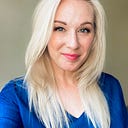If You Don’t Fail, You’re Not Trying
Reality is becoming less and less of a presence in our everyday, and has been for some time. We have become accustomed to pixel-perfect, filtered, and augmented images of our expectations that have strayed far from their humble beginnings. What we see, hear, and experience are almost always the result of a considerable amount of underlying time and effort, and most of all, the unseen failures that preceded. Case in point: Sir James Dyson’s journey to establish the Dyson company which introduced some of the top innovations on household appliances in today’s market.
Dyson labored for 15 years and failed 5,126 times on his design before finally landing on the winning solution for the Dual Cyclone vacuum, which he released in 1993. It’s hard to imagine having the drive to continue after so much prolonged failure, but rather than viewing it this way, Dyson saw his failures as opportunities to learn and innovate. Rather than feeling defeated, he reveled in the knowledge gained with each iteration that fell short. The result launched his company into what we know today as a forward-thinking multi-billion dollar business.
It is important to understand that immediate success is almost always a façade, despite what we may be led to believe from the news, social media, and the people around us. Even if by some miracle someone stumbles upon a brilliant idea that takes off right away, they will not have the insights gained from study and testing that can secure its longevity. Imagine a baby saying a word for the first time. The baby likely doesn’t understand what it means, how it go there, or how to recreate it. It is just as likely that (s)he only knows how to make sound, and what came out was purely coincidental based on the shape of the mouth and the position of the tongue in that instant. It is only with practice, repetition, and trying what doesn’t work that (s)he can finally deliver the word consistently and learn the nuance of doing so within different contexts as well.
Dyson’s ideas started out simple and became more complex and audacious as he went on. He was willing to look at his work as a problem-solution based model, rather than allowing short term success drive his process. Today, his name is synonymous with the best-of-the-best in home appliances. The Dyson company continues to create new technologies for their products today, and has encouraged James’ passion for innovation by introducing the James Dyson Award, which celebrates the most promising design and engineering students who can “design something that solves a problem.”
In the end, the best way to have a good idea is to have a lot of ideas. Many will never make it past the first iteration. It may not be because these are bad ideas; it may just be ill-timed, or one that is not yet fully formed. The only way to know for certain is to approach every challenge with open curiosity, a creative mind, and a willingness to learn from the failure. Imagine how life would look today if every great inventor had simply given up when it didn’t “come easy.” Without sacrifice, failure, and passion for a solution, we would be left less evolved, less equipped, and less prepared for the future. The reality is that success is often riddled with failure, without which nothing would be learned. Success on its own teaches nothing; it is the failures that ultimately reveal the weakness in our approach land provide opportunities to make it better. We must pursue every avenue as if it is new and we cannot predict the outcome. Only then can we understand the true nature of the need for what we are creating, and the willingness of the world to embrace it.
